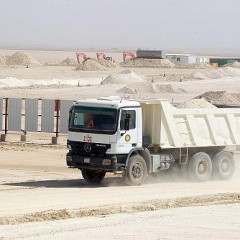
Jordan
Economy flops between rising costs and budget deficit; industrial and touristic indicators variation

The rise of the tax revenue outcome, which reached approximately 378.1 million dinars by 14.3%, and the drop of the non-tax revenue, by approximately 11.8 million dinars (7.8%), contributed to the rise of the total local revenues and foreign grants during the first ten months of 2013 to reach 4,684.7 million dinars, after it recorded 3864.8 million dinars during the same time in 2012, equivalent to 21.2%. The local revenues reached 4134.4 million dinars after it recorded 3,768.2 million dinars during the same time of last year, by an increase of 9.7%. While the foreign grants reached, during the same period, 550.3 million after it recorded 96.6 million dinars in the same period of last year. Jordan’s expenses increased to 5,582.2 million dinars compared to 5,025.9 million dinars during the same period of 2012, by 11.1%. The general budget recorded a high deficit by 897.5 million dinars, compared to 1,161.1 million dinars during the same period in the previous year. The economic growth improved in Jordan, reaching 3.3% in 2013 after it was 2.7% in 2012. Foreign reserves at the Central Bank increased, exceeding $12 billion. Besides, foreign investment flows increased in the Kingdom by approximately 20%, while the competitive national exports improved by 7.9%. On the other hand, the rate of the public debt recorded an increase of 1,997.5 million dinars by the end of 2013, by a rate of 12%, reaching 18,577.9 million dinars (i.e. 77.4% of GDP for 2013). Whereas, it approximately reached 16,580.4 million dinars (i.e. 75.5% of GDP for 2012), recording a rise of 1.9%.

















